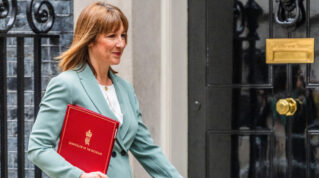The most deprived secondary schools saw more than double the real-terms cuts to their budgets between 2010 and 2021 than the least-deprived, new analysis shows.
The Institute for Fiscal Studies annual report on education spending also shows ministers’ promise to bring funding back to 2010 levels by next year is now potentially even further out of reach due to soaring costs.
Funding for all schools fell in real-terms over the decade after the Conservatives entered power in 2010, because cash did not keep pace with rising costs or pupil numbers.
But analysis by the think tank found that schools serving more disadvantaged pupils “have seen larger spending cuts over time”.
The most deprived fifth of secondary schools saw spending per pupil fall by 12 per cent in real terms between 2010 and 2021, compared with just 5 per cent for the least deprived fifth.
The most deprived schools still have a funding advantage – because poorer pupils still attract additional uplifts – but this advantage has shrunk from 31 per cent in 2010 to just 21 per cent in 2021.
Pupil premium devalued
Since 2015, the value of the pupil premium – an uplift paid to schools for some vulnerable children and those eligible for free school meals at any point in the previous six years – has eroded by 14 per cent in real terms.
The introduction of a minimum funding guarantee for schools in 2020 also “disproportionately benefited less deprived schools”.
In recent years, in part due to a high-profile campaign by unions, ministers have sought to address the funding crisis brought on by around a decade of real-terms cuts to school budgets.
Gillian Keegan, the education secretary, said last year the government’s current funding settlement “would allow schools to return to at least 2010 levels in real terms”.
In October, the IFS predicted schools’ purchasing power will actually be 3 per cent lower in real terms in 2024 than it was when the Conservatives came to power.
In today’s report, the IFS said schools’ spending power would in fact be 4 per cent lower.
The situation is worse for sixth forms, whose spending power will be 23 per cent below 2010 levels next year.
It comes after no additional school funding was announced in the autumn statement, which focused instead on tax cuts.
It also comes amid increasing pressure on ministers to reduce the attainment gap between poorer pupils and their better-off peers.
This year, the gap in GCSE attainment between disadvantaged pupils and their better-off peers has widened again, and is at its highest for over a decade.
Inequalities ‘magnify’ challenges for poorer schools
Luke Sibieta, a research fellow at the IFS, warned of “increases in educational inequalities since the pandemic, growing hardship due to the rising cost of living, and severe strain on children’s social services”.
“This magnifies the challenges faced by nurseries, schools and colleges serving the most disadvantaged communities.”

The analysis also found the gap between secondary and primary school spending has narrowed over time.
In the 1990s, secondary per-pupil funding was more than 50 per cent higher than primary.
That dropped to around 30 per cent in the 2000s and now stands at 10 per cent.
Some of the recent narrowing “reflects that primary schools have benefited more from the transfer of responsibilities and funding from local authorities to schools”.
However, this is “also clearly part of a long-term relative shift in funding and resources from secondary to primary schools”.
As a result, over the decade between 2009–10 and 2019–20, primary school spending per pupil grew by 6 per cent in real terms, whilst secondary school spending per pupil fell by 8 per cent.
The pupil population is due to decline by 600,000 or 8 per cent between next year and 2030-31.
The IFS said this would “reverse almost all of the increase in the pupil population since 2010–11 and create less demand for school places”.
However, declining pupil numbers “will only reduce spending needs if schools are able to shrink their costs and staff numbers in equal measure.”
















Your thoughts